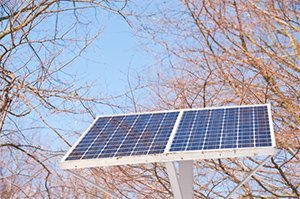In this case, there was no commercial way to measure the output power of the laser during development of the laser sources. So we developed the first commercially available 100kW laser power measurement system, which then lead to the most recent version that measures up to 120kW. The solution proved to be instrumental in this weapon’s development.
Another technology that has grown in leaps and bounds is the use of invisible wavelengths along the electromagnetic spectrum for purposes of imaging. This technology requires relatively long wavelengths, compared to the shorter wavelengths at which most lasers operate. Most applications involve medical imaging and security systems.
For example, a technique known as Terahertz Pulse Imaging (TPITM) — because of its ability to determine differences in soft tissues, water content, and cancer markers — gives us high-resolution images that have not been able to be seen before. This has been important in the earlier detection of cancer and the erosion of a tooth’s enamel layers.
Light at these wavelengths can also be used for imaging hidden objects that normally could not be imaged. Terahertz (THz) wavelengths, for instance, are used in products in airports to detect metallic, non-metallic, liquid, and gaseous objects that could be used as weapons or explosives. Other applications use Ophir- Spiricon’s flagship camera, the Pyrocam™ (currently in its fourth generation), as a thermal-electric technology that images these THz wavelengths. Since it is a camera, it delivers images at a near real-time rate, showing changes in these signals during short durations. Ophir’s thermopile technology is also used to measure the output power of these signals, which are typically very low output powers.
Lasers of all wavelengths have been used for material processing in industrial applications for decades. However, as true as this is, new ways and new laser technologies are continually being developed and applied at a rate that allows us to still consider it as an emerging technology.
Two laser categories have most recently attributed to successes in laser processing: high-powered lasers, and short-pulse lasers. High-powered lasers should actually be referred to as “higher and higher powered lasers” since there does not seem to be an end in sight to where laser powers will end up. 10- micron wavelength lasers (CO2 lasers) have been one of the industry’s workhorses for quite some time and there are literally tens, possibly even hundreds, of thousands of CO2 lasers being used worldwide. They are typically a reliable technology that is relatively easy to maintain. Ophir- Spiricon’s ModeCheck™ product was introduced in 2009 as an affordable, simple way to measure the real-time performance of these lasers at the work piece. Coupled with an Ophir water-cooled thermopile sensor, the laser user and technician can receive a comprehensive analysis of how the laser is being applied to their process.
In addition to the CO2 laser, 1-micron wavelength lasers (generated by crystals such as Nd:YAG or disc, diodes, or active fiber optic cables), have also been around for years. These technologies continue to show advancements with increased powers, wall plug efficiency, and quality. As powers increase, thermal effects on the system in which the laser source is integrated become more of a factor. Thermal effects are also an issue when the laser system’s components are not fully protected against the relatively dirty environments where they are used.
A phenomenon that has historically been a problem for these high-power lasers is known as “focus shift.” This is when thermal effects within the laser system cause a deformation on the lens and other optics cause a change in the position of the focused spot as it is applied to the material being processed. When that happens, the intended result is lost. Ophir-Spiricon introduced the BeamWatch® product, which provides a laser technician with the ability to view shifts in the focused spot with multiple data points per second. Since BeamWatch is a non-contact beam profiling system, there is no upper limit to the laser that can be measured. BeamWatch gives the technician all relevant data for setup or maintenance of the system, or gives the laser operator a quick, simple way of analyzing the laser with no-go parameters during day-to-day operations.
As we reflect on the year of light and all of the places where light has taken us so far, isn’t it interesting to think of where these promising and continually-evolving technologies will take us in the future? With all of the potential that this industry has, there’s no telling what’s next. But one thing will remain the same between now and then…understanding this sometimes-mysterious tool will be vital to the successes in which it is used. And we will be there to help.





 Ultra-High Velocity
Ultra-High Velocity